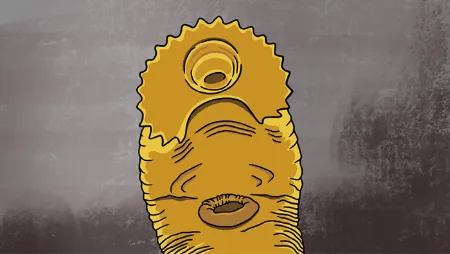Humans have been disrupting the global climate since the 1800s—chiefly via deforestation, intensive farming, and the burning of fossil fuels like coal, oil, and gas. How exactly has this changed our climate in the last 200 years? And how does it compare to historic patterns of natural climate change?
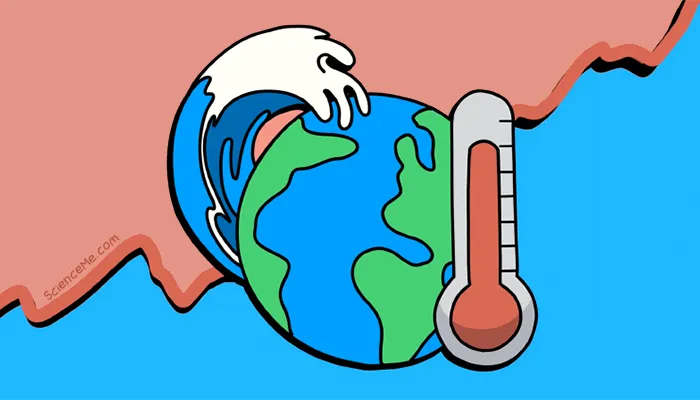
Natural Climate Change
Natural climate change usually happens slowly (over tens of thousands of years) to create continuous cycles of cooling and warming, called glacial and interglacial periods. There are a handful of natural causes that drive these changes.
Take the Milankovitch Cycles, also known as the Orbital Cycles. Gradual changes in the Earth's axial tilt, wobble, and orbital eccentricity alter both the seasons and long term climate by changing our exposure to the sun.
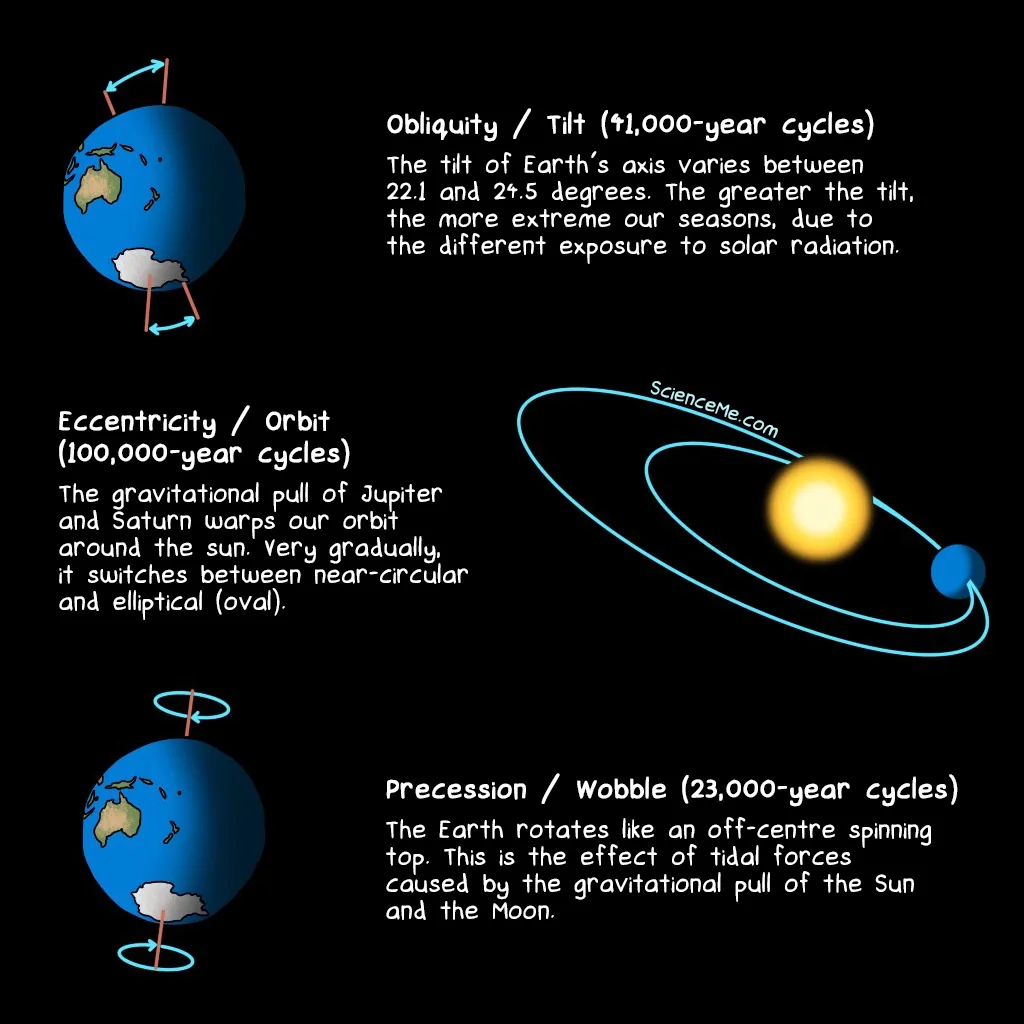
The Milankovitch Cycles are just some causes of natural climate change.
As a species, we're more or less okay with this because nature gives us a fighting chance to adapt and evolve to the changing climate. Life on Earth has the opportunity to evolve new behaviours (eg, migration) and physiology (eg, fur) over many generations.
But when climate change happens suddenly, there's not enough time to adapt and evolve. Entire populations, and even entire species, go extinct in the face of impossible environmental pressures.
Sudden natural climate change happens, but it's rare. We know of only five such times in the entire history of Earth. And it can generally be blamed on two wildly destructive forces: supervolcanoes and asteroids.
Supervolcano Eruptions
Supervolcanoes eject massive amounts of sulphur into the atmosphere very quickly. This can block the Sun for months on end, which hits plants hard. This, in turn, hits animal populations because at some point along the food chain, we all depend on plants for food.
I'm currently sitting about 250km from the Taupo Supervolcano System in New Zealand. It was the most recent supervolcano to blow proper, some 27,000 years ago, with a "smaller" eruption 1,800 years ago.
And there are plenty more supervolcanoes on Earth. Yellowstone, for example, last erupted in a big way 630,000 years ago. The Indian Peak-Caliente complex erupted 30 million years ago.
Fortunately, at the resolution of the human lifespan, supervolcano eruptions are practically non-existent. There is a chance one will blow during our lifetime but it's infinitesimally small. Really hope I didn't just jinx it there.
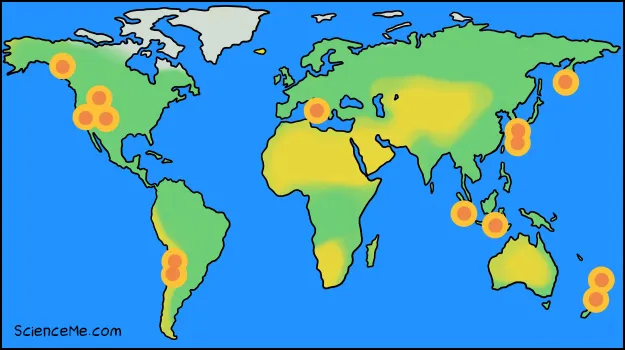
A map of the 14 largest known supervolcano eruptions in the world.
Asteroid Impacts
Asteroids can also do a bit of damage to our terrestrial setup. Asteroids are large space rocks up to the size of a planet. Not to be confused with meteors (which burn up in our atmosphere), meteorites (the fragments that hit Earth), or comets (chunks of space ice). So now you know.
Around 66 million years ago, an asteroid hit the Yucatan Peninsula in Mexico, producing a blast wave that threw soil and rocks into space. The Earth was shrouded in a layer of dust for months, which blocked the sun, cooled the planet, and rendered more than a few dinosaurs extinct.
Today, the Chicxulub crater is visible from space, some 150km wide and 20km deep. Fortunately, giant asteroid impacts are also super rare. Jinx again.
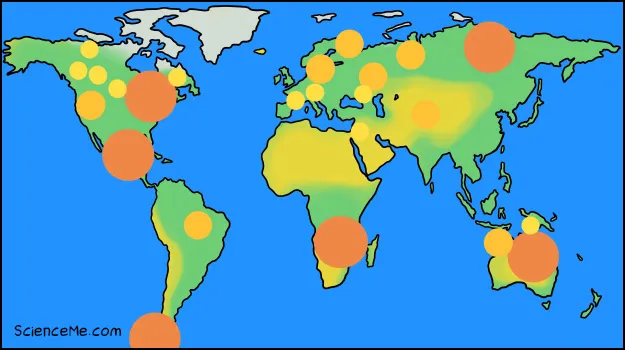
A map of the 24 largest known asteroid craters in the world.
ManMade Climate Change
For decades, certain politicians and industry leaders fought hard to deny the science of manmade climate change. Today, you have to be pretty obtuse to ignore the evidence of what's happened, even if we can't all agree on how it will pan out.
"It is unequivocal that human influence has warmed the atmosphere, ocean and land. Widespread and rapid changes in the atmosphere, ocean, cryosphere and biosphere have occurred." - IPCC
Some effects of rapid manmade climate change.
How does manmade climate change compare to the history of natural climate change on Earth? Let's look at past, present, and future trends of two major features: global temperatures and sea levels.
Global Temperature Rises
Over the past 500 million years, global surface temperatures have ranged over a massive 10-32°C (50-90°F). How can we possibly know this?
The data comes from multiple sources which are then cross-referenced for validation. These include bubbles of prehistoric atmosphere trapped in ice cores, ratios of oxygen isotopes trapped in ice and marine fossils, and the biodistribution of ancient plant fossils. This gives us a reliable record of how global temperatures have changed in the long term.
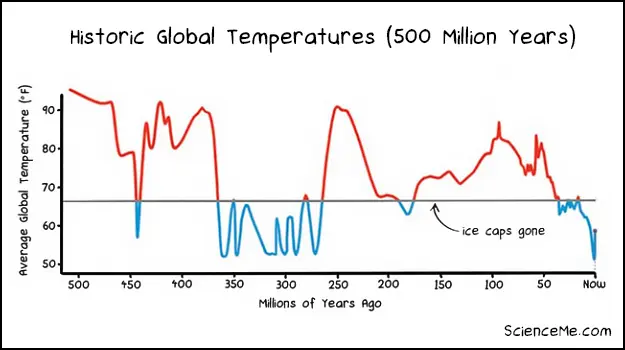
Historic global temperatures during the last 500 million years. (Data source: Science.org)
At this resolution, global warming doesn't look that bad, right? But let's zoom in to the Holocene: the 10,000-year period in which human civilisation has thrived.
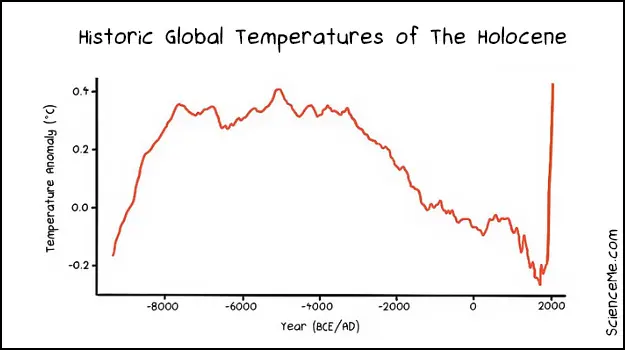
Historic global temperatures during the Holocene. (Data source: Science.org)
The Holocene was among the most stable periods in Earth's four-billion-year history, with temperatures varying by less than 0.2°C. Our planet was actually cooling off over the last 5,000 years. But the industrial revolution reversed that and then some.
In 2022, the average global temperature is up by 1.1°C on pre-industrial levels.
And the trend isn't slowing. The IPCC predicts that, even with current pledges to slow climate change, temperatures will a rise by 3°C in the 21st century. There is a worse scenario: if our emissions remain constant (or even grow) then global temperatures will hit 4°C higher.
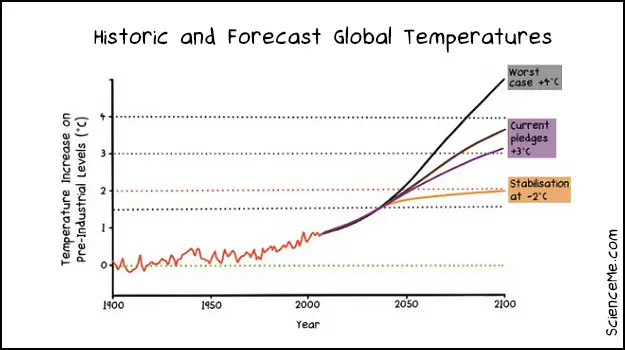
Forecast global temperatures to 2100. (Data source: Carbon Brief)
Then there's permafrost.
Permafrost is frozen earth found on land and under the ocean. It contains unholy amounts of greenhouse gases in the form of ancient plant matter.
As the Earth continues to warm rapidly, the permafrost will melt at an unknown rate, adding yet more greenhouse gases to the atmosphere. It could create a catastrophic feedback loop.
The IPCC's best-case scenario predicts 85% of permafrost gases released between now and 2100. It's not hypothetical; methane is already leaking from the sea floor in Antarctica.
The good news is that most of the methane is under the sea bed. So methane liberated from the ocean permafrost should simply dissolve into the ocean.
The bad news is that the carbon dioxide in the land-based permafrost is in vast supply. And it will reach the atmosphere. An estimated 1,000-5,000 gigatons of ancient carbon will flood the air this century, releasing 100-500 years of our current carbon footprint.
Global Sea Level Rises
Sea levels have two major influencers:
- Melting Ice. As the planet warms, glaciers and ice sheets melt into the ocean, raising sea levels. This happens naturally at the end of every glacial period, but right now we're in the middle of an inter-glacial. Manmade climate change has caused the Arctic to lose 40% of its ice in the last 40 years.
- Ocean Temperatures. Thermal expansion means that warm water takes up significantly more space than cold water, increasing the overall volume of the ocean. Once again this is driven by rising temperatures caused by human activity.
In the past, sea levels were naturally much lower than they are today. Around 10,000 years ago when the last glacial period ended, sea levels gradually rose by 120 metres (400 feet) to shape the coastlines we see today. An equilibrium was reached about 3,000 years ago. Cue most of civilised human history.
Now sea levels are rising again, and it's not part of any known natural cycle. Since real-time records began in the late 1800s, we've seen a rise of around 20cm (8 inches) over just 140 years.
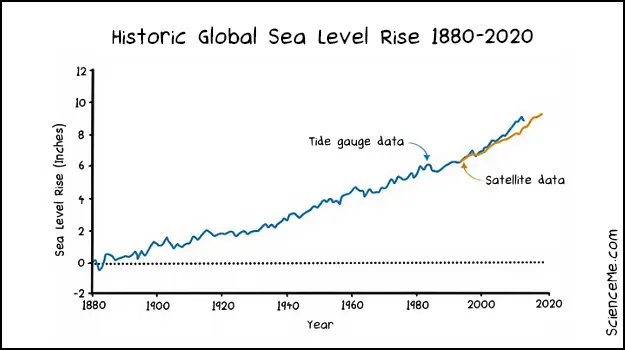
Historic sea level rise from 1880 to 2020. (Data source: US Global Change Research Program)
That may not sound like much, but it's enough to create an existential threat to people living on islands in the Pacific. Eight such islands have already been swallowed whole. In the US, more than 90 coastal cities are already experiencing chronic flooding.
Continual sea level rise will be a steady onslaught for the 250 million people living in coastal regions less than 5m (16 feet) above sea level. In the coming years, storm surges, high tides, and rising oceans will create frequent and serious flooding.
How much will sea levels rise? The major ice sheets of Greenland and Antarctica contain enough ice to raise sea levels by 65m (213 feet). Estimates vary as to exactly how much to expect this century. NASA predicts a rise of 30-240cm (1-8 feet) by 2100, while the IPCC forecasts 80-100cm (2.6-3.3 feet).
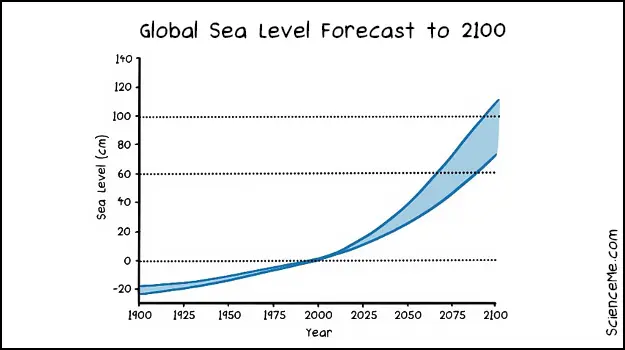
Forecast sea level rise to 2100 (Rahmstorf et al., 2011)
The problem for your great-grandchildren is that sea levels will continue to rise for many centuries thereafter, even if we completely eliminate our carbon emissions this century.
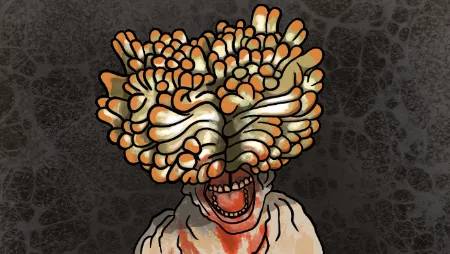
Could The Last of Us Happen?

What is Schrodinger's Cat?
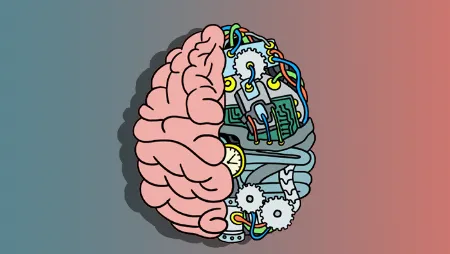
Are We Biological Machines?
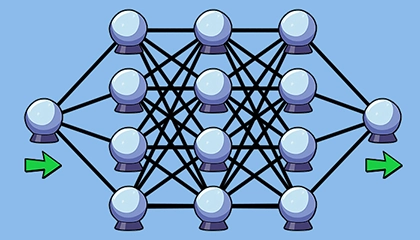
How Does ChatGPT Work?
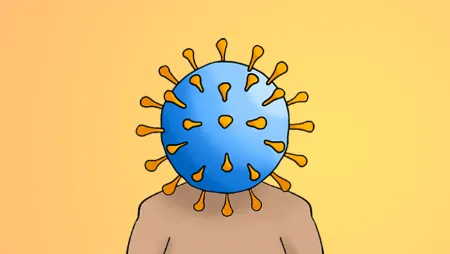
What COVID Does To Your Body

The Life of Isaac Asimov

A Man Walks into a Teleporter
